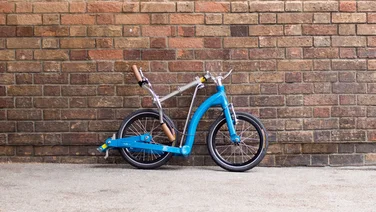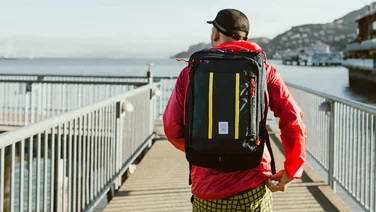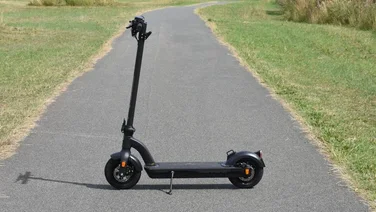To help us provide you with free impartial advice, we may earn a commission if you buy through links on our site. Learn more













The Sony NEX-5 was our favourite camera of 2010. Its image quality was a true match for an SLR’s, and its slim, stylish design, superb videos and innovative shooting modes added up to an outstanding package. The Sony NEX-5N is a subtle but inspired evolution of the NEX-5, keeping the best and addressing the worst of its predecessor.

Its slim magnesium alloy body looks extremely smart. The 3in wide-aspect screen with its sharp 921,600-dot resolution makes a reappearance, but this time it’s touch sensitive. This isn’t a huge timesaver in general operation as the physical buttons and dial are generally quicker to use, but it came into its element when moving the spot focus point or defining a moving subject to track. The physical controls remain fairly scant but it’s possible to define up to seven functions for quick access. It retains its predecessor’s wealth of advanced shooting modes, including automatic panorama stitching in both 2D and 3D, automatic HDR, combining of multiple exposures to reduce noise and lots of creative effects.

The resolution is up from 14 to 16 megapixels, and we’re happy to report that this comes with no discernible detriment to noise levels. That places the NEX-5N way beyond rival compact system cameras (CSCs) and on a par with the best SLRs at this price for sensor quality. The ISO control goes up to 25,600, and delivered usable snaps at that top setting. The NEX-5’s automatic mode failed to capitalise on its superb sensor, limiting ISO speeds to 1600, but the NEX-5N sensibly raises this to ISO 3200.

Videos are recorded in AVCHD format at 1080-25p, 1080-50i or 1080-50p. There’s full control over the shutter speed, aperture and ISO speed, and track focus can be updated via the touchscreen while recording. Picture quality was outstanding, with sharp details, natural colours and low noise in gloomy conditions.
Video autofocus was fast, smooth and silent, but we did notice some clicks in the soundtrack. It appears that the orientation sensor is to blame, with subtle clicks that were audible in the room as we angled the camera up, down or to the side. However, we had to move it around pretty violently to induce these clicks while holding the camera level. There are 4″ href=” 4″ target=”_blank” rel=”noopener noreferrer”>videos on YouTube
There’s also the longstanding issue of Sony’s NEX and Alpha cameras overheating while recording. A warning icon appeared on screen after shooting for 20 minutes, but the camera kept recording for the full 30 minutes’ maximum clip length. It might not last so long when recording in hotter climates, though.
One big reservation we had with the NEX-5 was that shot-to-shot times averaged 2.8 seconds on typical settings. That time is now down to 0.65 seconds. The 10fps continuous mode only lasted for four shots before slowing to 2.6fps for JPEGs and 1fps for raw – that’s below par compared to its peers but we could live with it. Autofocus performance was more of a concern. The camera focused and captured within half a second in bright conditions, but in low light it took up to two seconds. It’s a common problem for CSCs but the 5N is affected more than usual.

Our test unit was supplied by Jessops, where the NEX-5N is available with a 3x zoom lens for £600, but for the same money it’s also available with both the zoom lens and a wide-angle pancake lens. This bundle gives the flexibility of having a zoom function when you need it and a slim 55mm profile and 340g weight for when portability is more important.
Sadly, these lenses didn’t excel for sharpness, with slightly soft focus towards the edges of frames at wide apertures. The pancake lens has an f/2.8 maximum aperture, but automatic settings sensibly opted for f/4 to keep shots sharp, even in low light. As such, this lens really only offers a size advantage over the zoom lens, and without stabilisation built in, isn’t as good in low light.

It’s worth noting that the flash is a small detachable unit so it can be left at home when it’s not needed. However, we often set off without it and later regretted it. An integrated flash is preferable, although it would inevitably push up the camera’s bulk. To its credit, this flash is quick to recycle, shooting at full power every 2.3 seconds – twice as fast as most integrated flashes.
Sony’s NEX system can’t match Panasonic and Olympus’s Micro Four Thirds for the number and quality of lenses, and it’s lagging behind for autofocus speed too. The audible clicks and overheating issues are annoying blemishes on what is otherwise the best video mode we’ve seen.

Ultimately, though, the positives outweigh the negatives. Photo quality is significantly better than its rivals, it’s responsive, easy to use and packed with fun and genuinely useful extras. It’s quite a bit pricier than the Sony NEX-C3, but its 1080-50p videos with manual exposure, wider ISO range, touchscreen and magnesium alloy body make it worth the extra. We also found that the 5N had a slight advantage over the C3 for image quality, thanks to digital correction of chromatic aberrations, lens distortions and vignetting, as well as lower noise in its JPEGs.
The Nikon 1 J1 comes close to matching the 5N and is a little cheaper in single-lens kit form, and the forthcoming Panasonic Lumix DMC-GX1 looks like it will give the 5N a serious run for its money. For now, though, the NEX-5N is the best CSC we’ve seen.





